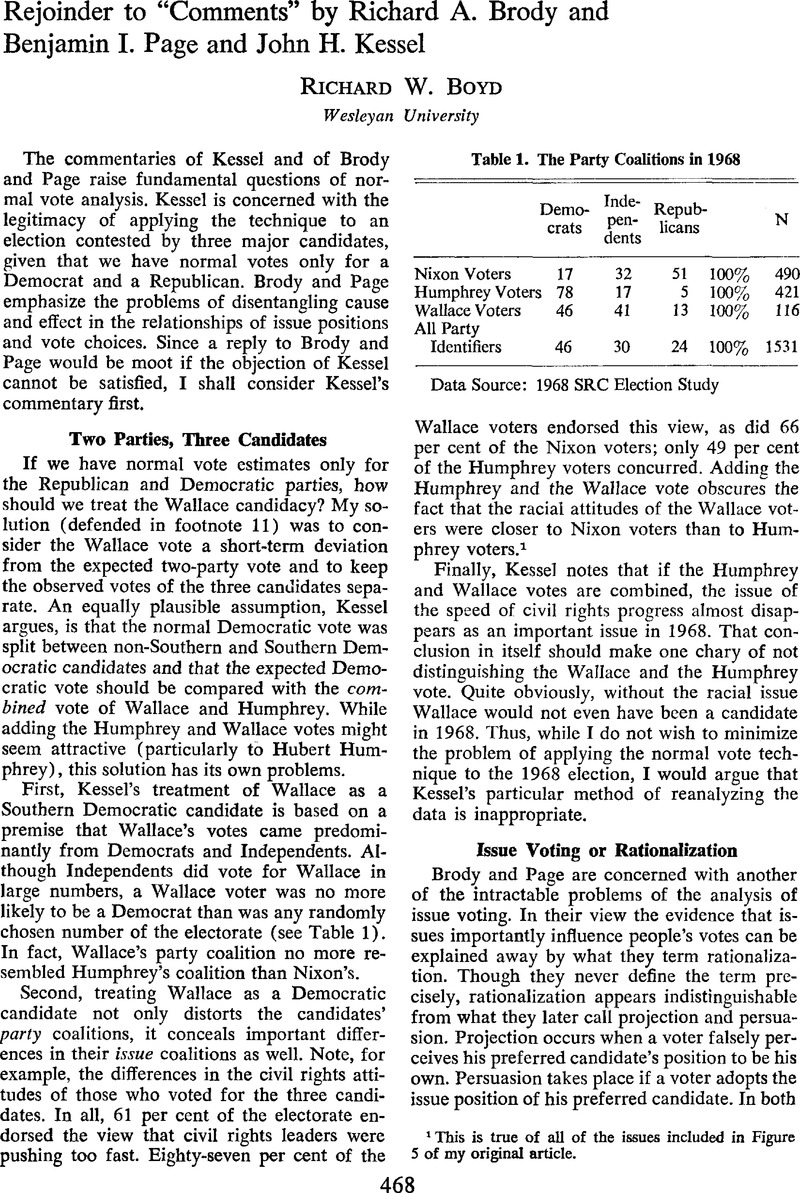Published online by Cambridge University Press: 01 August 2014

1 This is true of all of the issues included in Figure 5 of my original article.
2 Key, V. O. Jr., The Responsible Electorate (Cambridge: Harvard University Press, 1966), p. 47 CrossRefGoogle Scholar.
3 Key, p. 78.
4 Pomper, Gerald M., “Toward a More Responsible Two-Party System? What, Again?” Journal of Politics, 33 (11., 1971), pp. 916–40CrossRefGoogle Scholar.
5 Pomper, pp. 925–26.
6 Brody, Richard A. and Page, Benjamin I., “The Assessment of Policy Voting: A Commentary,” American Political Science Review, 66 (06, 1972), 450–458 CrossRefGoogle Scholar, and Shapiro, Michael J., “Rational Political Man: A Synthesis of Economic and Social-Psychological Perspectives,” American Political Science Review, 63 (12, 1969), 1106–19CrossRefGoogle Scholar.
7 This undoubtedly is why Davis, Hinich, and Ordeshook assumed that “all citizens make identical estimates” of candidates' stands on issues. Davis, Otto A., Hinich, Melvin J., and Ordeshook, Peter C., “An Expository Development of a Mathematical Model of the Electoral Process,” American Political Science Review 64 (06, 1970), 431 CrossRefGoogle Scholar.
Comments
No Comments have been published for this article.